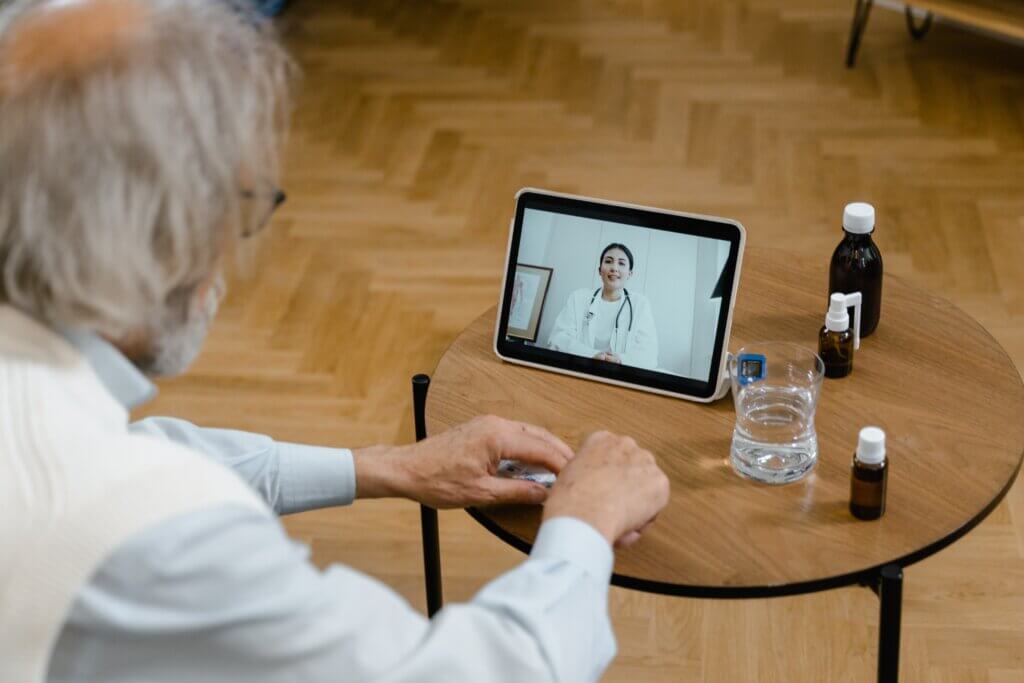
In the age of digital transformation, the ability to harness video and audio communication technologies has revolutionized various sectors, including healthcare. For rural and remote communities, these advancements have become a beacon of hope in addressing health disparities caused by geographical barriers. By leveraging the internet’s power, telehealth – the provision of healthcare remotely via telecommunications technology–has been instrumental in overcoming these barriers, allowing patients to receive medical services without the need for physical travel.
Companies like Dogtown Media, a leading medical app development company, are at the forefront of these advancements. With their expertise in creating telehealth applications, they’re enabling more robust and flexible ways of providing healthcare services remotely. Let’s discuss how.
The Benefits of Using Audio and Video Technology to Deliver Health Services in Rural and Remote Areas
 The use of audio and video technology in the delivery of health services, also known as telehealth, has opened up a myriad of benefits for patients in rural and remote areas. These benefits, ranging from improved accessibility to cost savings, have a significant impact on patients’ lives and the overall healthcare system.
The use of audio and video technology in the delivery of health services, also known as telehealth, has opened up a myriad of benefits for patients in rural and remote areas. These benefits, ranging from improved accessibility to cost savings, have a significant impact on patients’ lives and the overall healthcare system.
Promoting Accessibility and Convenience
One of the most significant advantages of telehealth is its ability to promote accessibility and convenience. For rural and remote patients, distance, travel time, and costs can often pose a considerable challenge in accessing healthcare. Video and audio communication technologies circumvent these issues, allowing patients to consult with healthcare providers from the comfort of their homes. This not only enhances the convenience of accessing healthcare but also enables timely medical interventions, particularly crucial for those with chronic conditions or those who may need immediate attention.
Improving Patient Outcomes
By reducing the barriers to accessing healthcare, telehealth has also demonstrated its potential to improve patient outcomes. Studies have shown that continuous patient monitoring and frequent virtual consultations can lead to better disease management and improved health outcomes. Moreover, telehealth services can enable prompt medical intervention, which can be life-saving in critical situations.
Reducing Healthcare Costs
Cost savings are another notable benefit of using audio and video technology in healthcare. By eliminating travel costs and reducing the need for hospital admissions through proactive management of health conditions, telehealth can significantly decrease healthcare expenses for patients. Furthermore, it allows healthcare providers to optimize their services and resources, contributing to overall cost efficiency within the healthcare system. These savings can then be redirected to enhance patient care services, fostering an environment of sustainable healthcare provision in rural and remote areas.
What Types of Services Have Proven to be Effective in Rural Areas?
 In the scope of telehealth, several services have demonstrated effectiveness in improving healthcare access and outcomes for rural communities. These services utilize the flexibility and convenience of video and audio communication technologies to offer personalized healthcare solutions that cater to the specific needs of rural and remote patients.
In the scope of telehealth, several services have demonstrated effectiveness in improving healthcare access and outcomes for rural communities. These services utilize the flexibility and convenience of video and audio communication technologies to offer personalized healthcare solutions that cater to the specific needs of rural and remote patients.
Remote Patient Monitoring
Remote Patient Monitoring (RPM) is a form of telehealth where medical professionals use digital technologies to track a patient’s health data remotely. This service is particularly beneficial for patients with chronic diseases like diabetes or heart conditions, as it enables healthcare providers to continuously monitor vital signs and symptoms, making it easier to manage these conditions and prevent hospitalizations. By catching potential issues early, RPM can improve health outcomes and even save lives.
Virtual Consultations and Diagnoses
Virtual consultations and diagnoses are another critical service in rural telehealth. These services enable patients to consult with healthcare providers via video or audio calls, eliminating the need for physical travel. Moreover, virtual consultations have proven effective in diagnosing a range of conditions, from skin disorders to respiratory illnesses. The ability to access professional medical advice from home increases the likelihood of early detection and treatment, leading to better patient outcomes.
Mental Health Services
Access to mental health services is often limited in rural areas due to a lack of specialized providers. Telehealth bridges this gap by offering teletherapy or telepsychiatry services. Patients can connect with therapists and psychiatrists through video calls, allowing for real-time interaction and treatment. Studies show that teletherapy can be as effective as in-person therapy, making it a promising solution for mental healthcare access in remote regions.
Post-Operative and Chronic Disease Management
Managing post-operative care and chronic diseases is a significant challenge for patients living far from healthcare facilities. Telehealth services provide an effective solution by offering remote post-operative check-ups and continuous management for chronic diseases. This includes medication management, routine follow-ups, and health education. Not only does this minimize the risk of complications and readmissions, but it also empowers patients to take charge of their health, thereby enhancing their quality of life.
By integrating these services into the healthcare system, telehealth can significantly enhance healthcare delivery, especially in rural and remote areas where access to quality healthcare is often challenging. The possibilities are endless as technology continues to evolve, bringing about a promising future for healthcare delivery in these regions.
Challenges for Telehealth in Remote Areas
While telehealth offers numerous advantages for rural healthcare, it is not without its challenges. Several obstacles need to be overcome to fully realize the potential of this technology.
Technology and Infrastructure Challenges
One of the significant barriers in remote areas is the lack of robust internet infrastructure. Slow or unstable internet can hinder the effectiveness of video consultations or real-time data monitoring. Additionally, not all patients may have access to the necessary devices or technical skills to use telehealth services, creating a barrier to its adoption.
Lack of Training or Experience in Telehealth among Healthcare Providers
Telehealth requires a new set of skills from healthcare providers. They need to navigate different technologies, manage virtual patient interactions, and interpret remote data. This transition can be challenging, particularly for those not familiar with digital technologies.
Privacy and Security Concerns
Data privacy and security are also significant concerns in telehealth. Transmitting sensitive health information over the internet poses a risk of data breaches, which could compromise patient privacy. There is a need for stringent security measures and protocols to ensure the secure transmission and storage of patient data.
Addressing these challenges is critical to making telehealth a truly viable solution for rural and remote healthcare delivery.
Future Perspectives: Opportunities and Predictions for Telehealth in Rural Areas
Looking forward, telehealth in rural areas presents an array of exciting opportunities. As technology continues to advance, we can expect to see the development of more sophisticated tools for remote patient monitoring, diagnostic technologies, and digital therapeutic interventions. These advances will likely make telehealth even more efficient, accessible, and effective, potentially transforming rural healthcare delivery.
AI-powered diagnostic tools and health tracking applications are already showing promise, and their further refinement and integration into telehealth platforms will likely improve patient outcomes. Moreover, advancements in wearable technologies could augment remote patient monitoring, providing healthcare providers with a more comprehensive view of their patients’ health.
Meanwhile, ongoing improvements in digital infrastructure, such as the roll-out of 5G and satellite internet services, could alleviate some of the connectivity issues in remote areas. This development will make telehealth services more reliable and accessible for a broader range of rural patients.
The future of telehealth in rural areas is bright, and it is poised to play an increasingly integral role in healthcare delivery. While challenges remain, the potential benefits for patients in terms of accessibility, cost-effectiveness, and improved health outcomes are substantial and compelling. Telehealth represents a critical area for continued focus, innovation, and investment in the years to come.





